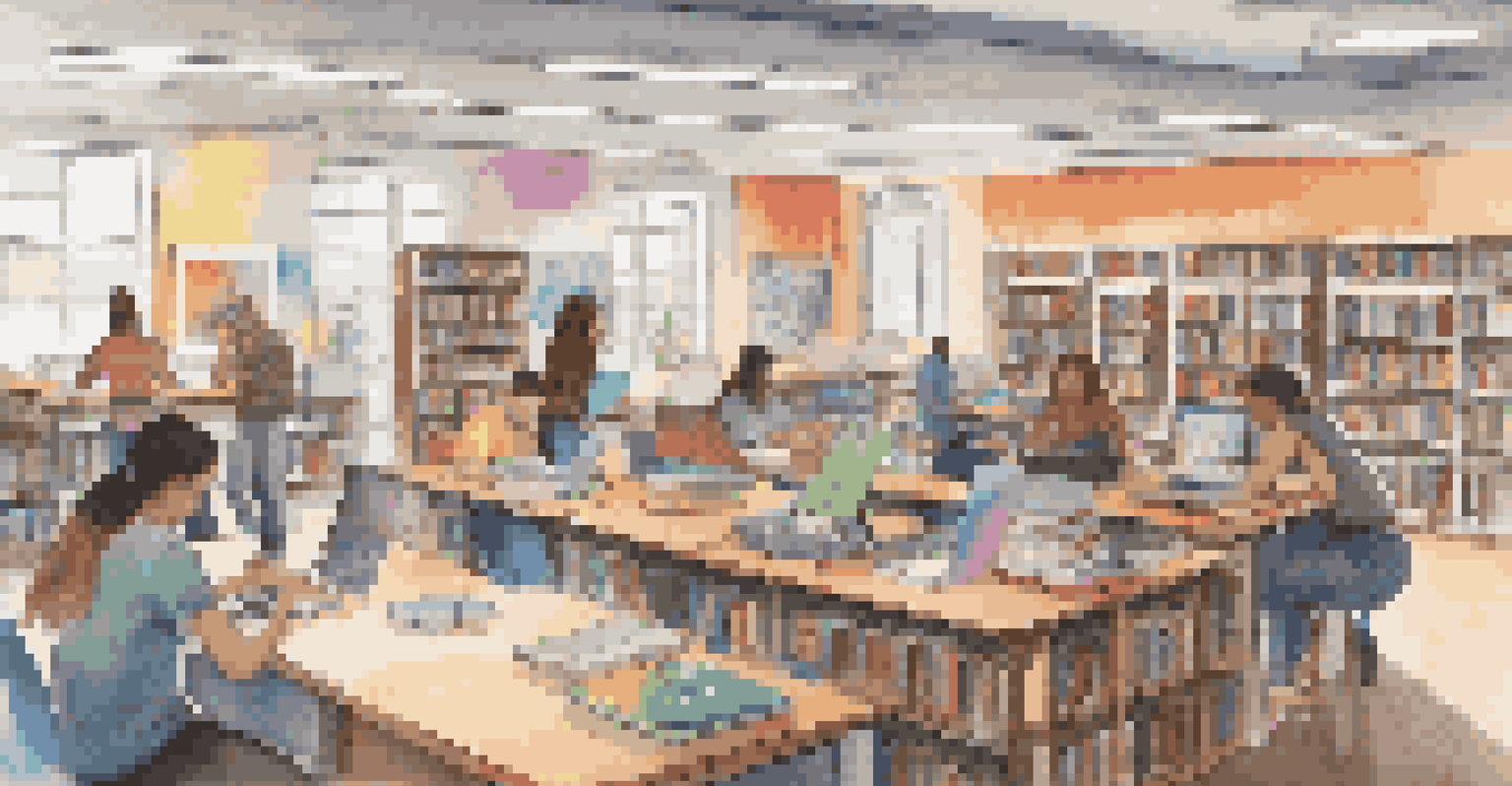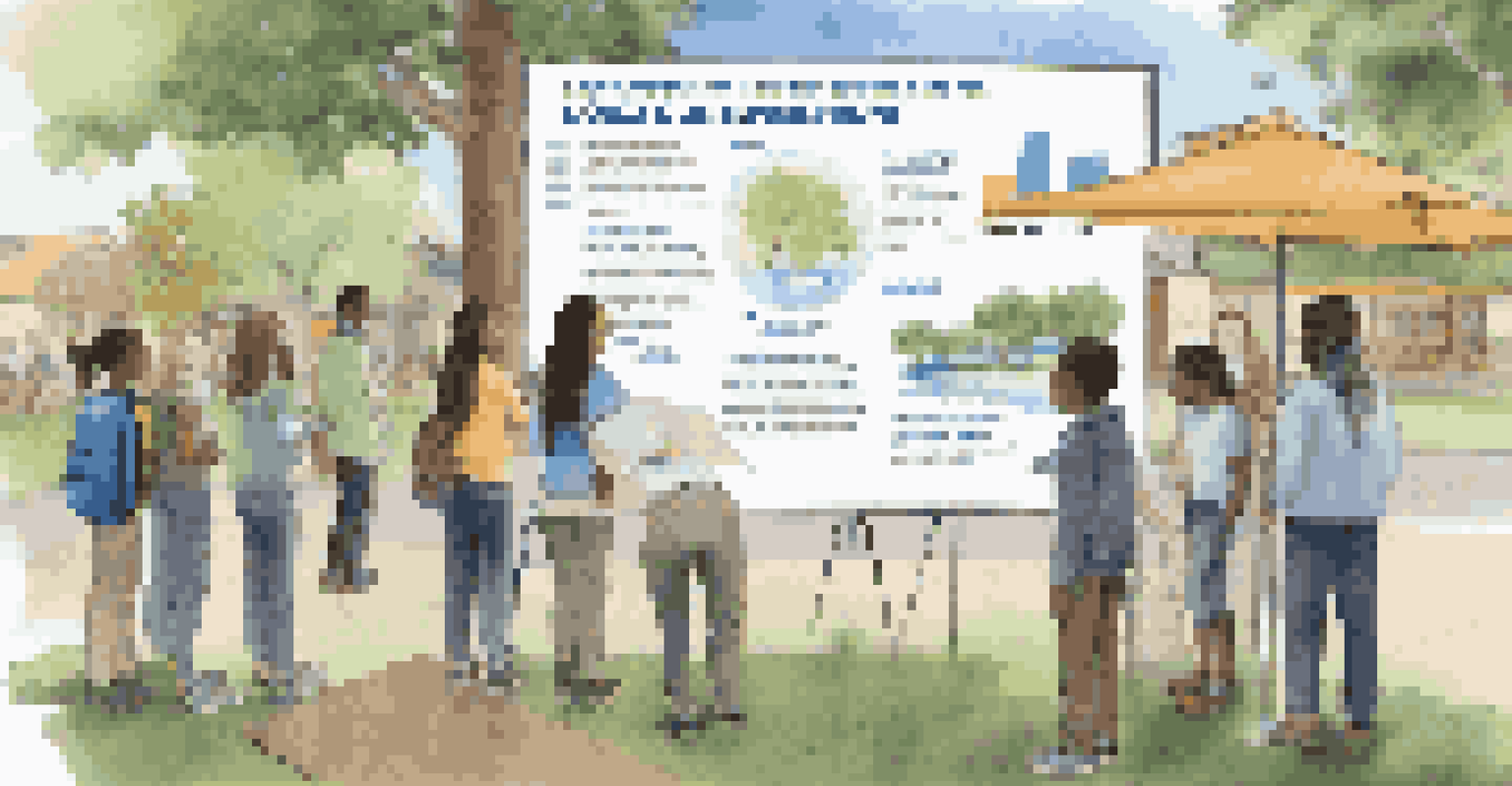OER and Project-Based Learning: Enhancing Student Engagement

Understanding Open Educational Resources (OER)
Open Educational Resources, or OER, are teaching materials that are freely available for anyone to use. They include textbooks, courses, and multimedia content that educators can modify and share. This accessibility not only lowers costs for students but also encourages diverse approaches to learning.
Education is not the filling of a pail, but the lighting of a fire.
OER is like a vast library where teachers and students can borrow knowledge without any fees. Imagine being able to access a treasure trove of resources that can be tailored to fit different learning styles! This flexibility is one of the key reasons OER is gaining traction in educational settings.
By utilizing OER, educators can create personalized learning experiences that resonate with students. This adaptability fosters a more inclusive environment, ensuring that everyone can participate in their educational journey.
What is Project-Based Learning (PBL)?
Project-Based Learning is an instructional method where students engage in real-world projects to acquire deeper knowledge. Instead of traditional lectures, PBL emphasizes hands-on experiences and collaboration among students. This approach transforms the classroom into a dynamic learning environment.

Think of PBL as a journey where students are the explorers, navigating through projects that spark their curiosity. For instance, instead of reading about ecosystems, students might create a sustainable garden, applying their knowledge in a tangible way. This makes learning more relevant and impactful.
OER Enhances Learning Accessibility
Open Educational Resources provide free access to quality materials, promoting inclusivity among diverse student backgrounds.
By immersing students in projects that require critical thinking and problem-solving, PBL cultivates essential skills for the future. It empowers students to take ownership of their education, leading to enhanced engagement and motivation.
The Intersection of OER and PBL
OER and PBL complement each other beautifully, as both focus on enhancing student engagement. OER provides the resources needed for diverse projects, while PBL encourages active exploration of those resources. Together, they create a rich learning ecosystem.
The best way to predict the future is to create it.
Imagine a classroom where students use open resources to tackle real-world issues; that's the power of combining OER and PBL. For example, students could research climate change using OER materials and then develop a campaign to raise awareness in their community. This connection to real life makes learning more meaningful.
By integrating OER into PBL, educators can offer students the tools they need to succeed while fostering creativity and collaboration. This synergy not only enriches the learning experience but also prepares students for the challenges they will face in the world beyond the classroom.
Benefits of OER in Project-Based Learning
One major benefit of using OER in PBL is the increased accessibility of resources. Students from various backgrounds can access high-quality materials without financial barriers. This inclusivity helps level the playing field, ensuring that all students have the opportunity to thrive.
Additionally, OER allows for continuous updates and improvements to learning materials. Educators can easily incorporate the latest research and trends into their projects, keeping the content relevant and engaging. This adaptability is crucial in a rapidly changing world.
PBL Engages Students Effectively
Project-Based Learning fosters student engagement by allowing learners to tackle real-world projects that spark their curiosity.
Finally, utilizing OER in PBL fosters collaboration among students and teachers. When everyone has access to the same materials, it encourages discussion, sharing of ideas, and teamwork, creating a vibrant learning community.
Enhancing Student Engagement through PBL
Project-Based Learning naturally enhances student engagement by making education interactive and relevant. When students work on projects that interest them, they are more likely to invest time and energy into their learning. This intrinsic motivation leads to better retention of information.
For example, when students collaborate on a project about renewable energy, they not only learn about the science behind it but also gain skills in teamwork and communication. These experiences create lasting memories and a deeper understanding of the subject matter.
Moreover, PBL encourages students to take ownership of their learning journey. By allowing them to choose their projects and explore their interests, educators can facilitate a more personalized educational experience that resonates with each student.
Real-World Applications of OER and PBL
Integrating OER and PBL opens the door to real-world applications of classroom learning. Projects can address local community issues, allowing students to see the impact of their work outside the classroom. This connection to the community fosters a sense of purpose and responsibility among students.
For instance, students could use OER resources to research local water quality and develop a project to raise awareness about conservation. Such initiatives not only educate students but also benefit their communities, creating a win-win situation.
Synergy of OER and PBL
The combination of OER and PBL creates a rich learning environment that encourages creativity, collaboration, and real-world application.
By engaging in projects that have tangible outcomes, students develop a sense of agency and empowerment. They learn that their ideas matter and can lead to meaningful change, which is a powerful motivator for continued engagement.
Challenges and Considerations in Implementation
While combining OER and PBL offers numerous benefits, there are challenges to consider. One major hurdle is ensuring that all students have the necessary technology to access OER materials. Educators must be mindful of digital divides and work to provide equitable access.
Additionally, creating effective PBL experiences with OER requires careful planning and collaboration among educators. Teachers need to align their goals and expectations to ensure that projects are well-structured and achievable. This collaborative effort can be time-consuming but is essential for success.

Finally, assessment methods must evolve to accurately measure student learning in a PBL context. Traditional testing may not capture the full scope of what students have learned through projects, necessitating the development of new evaluation strategies that reflect their skills and understanding.